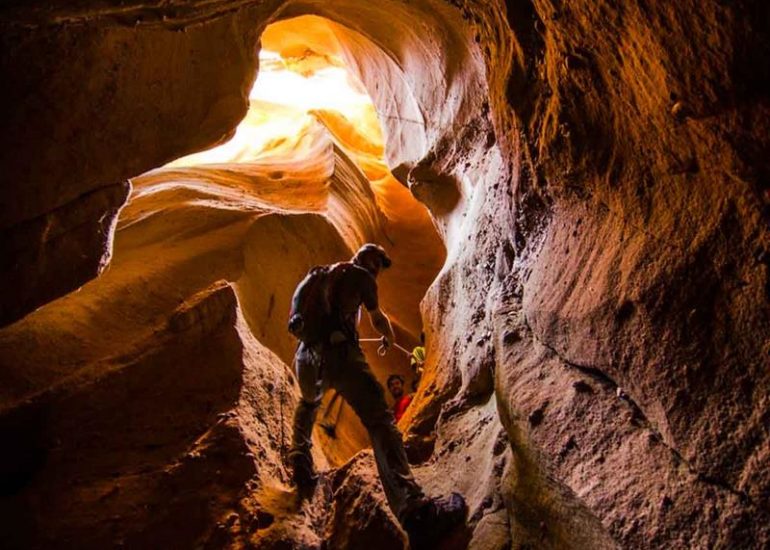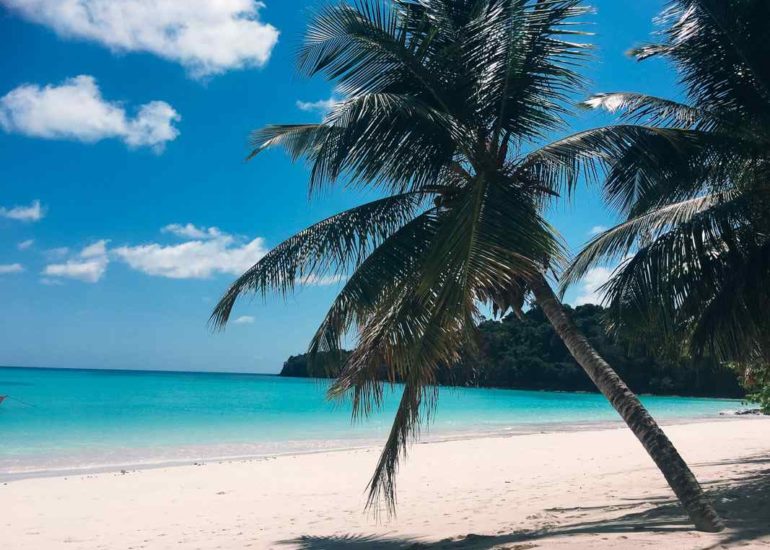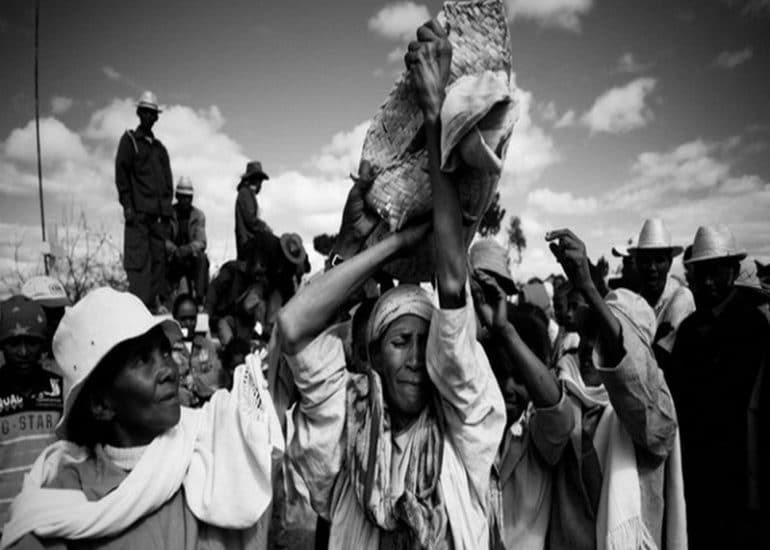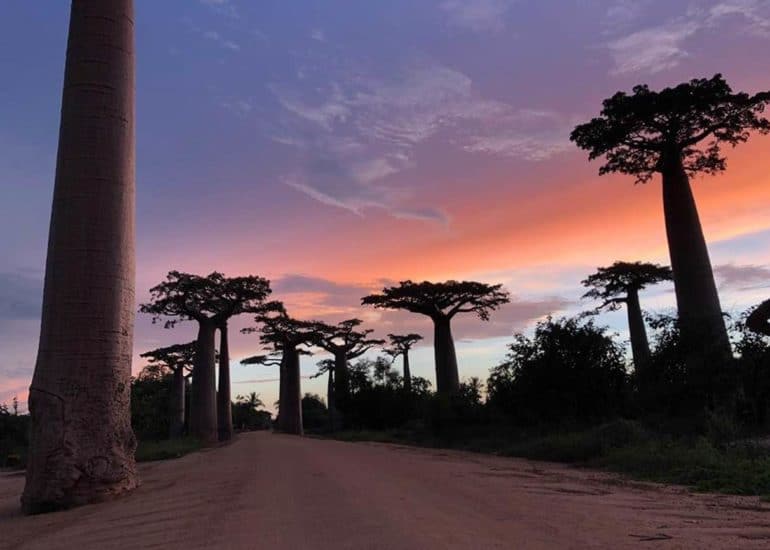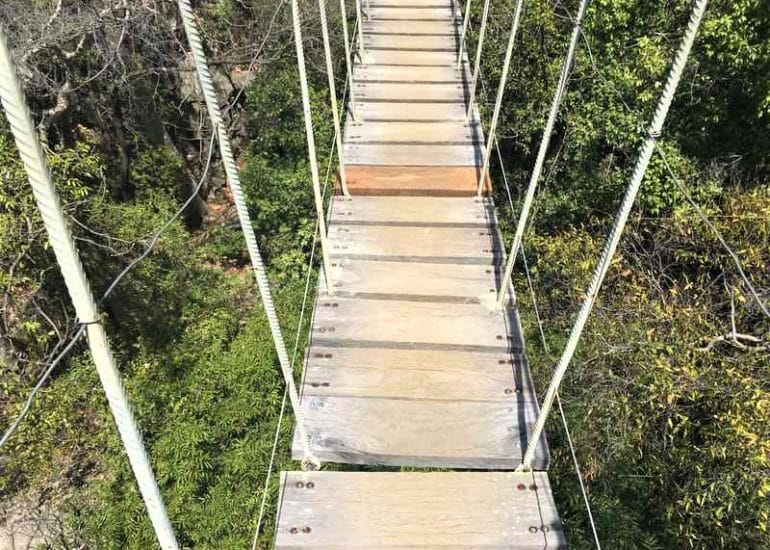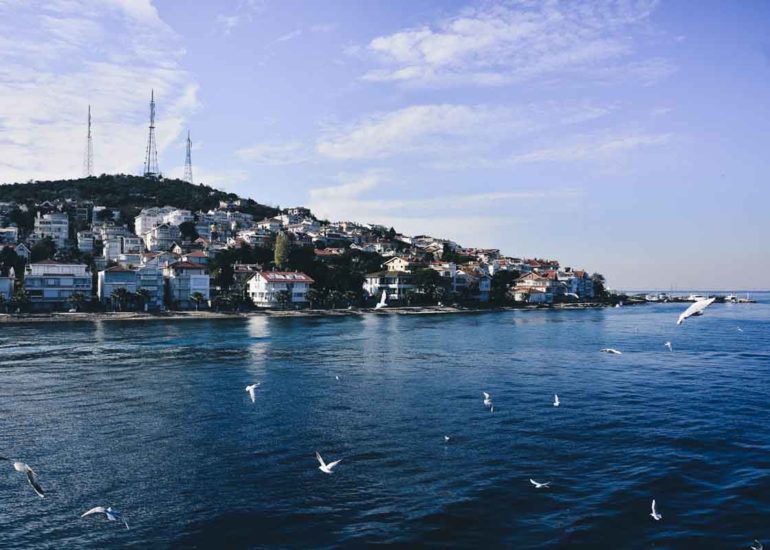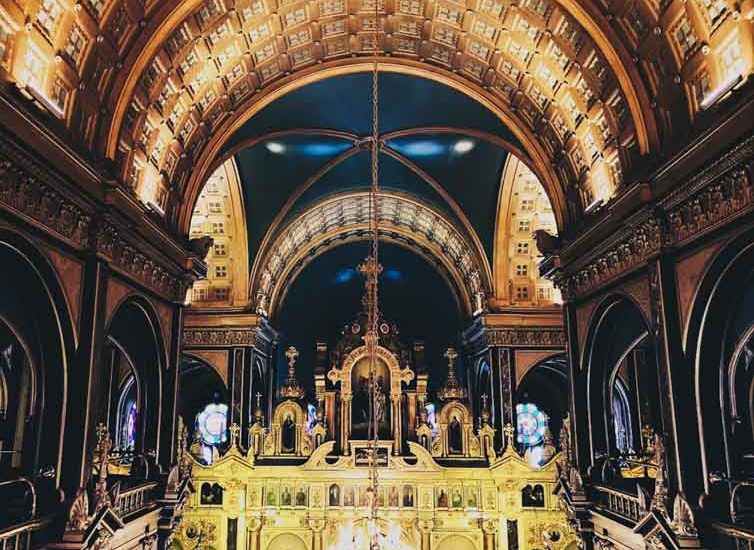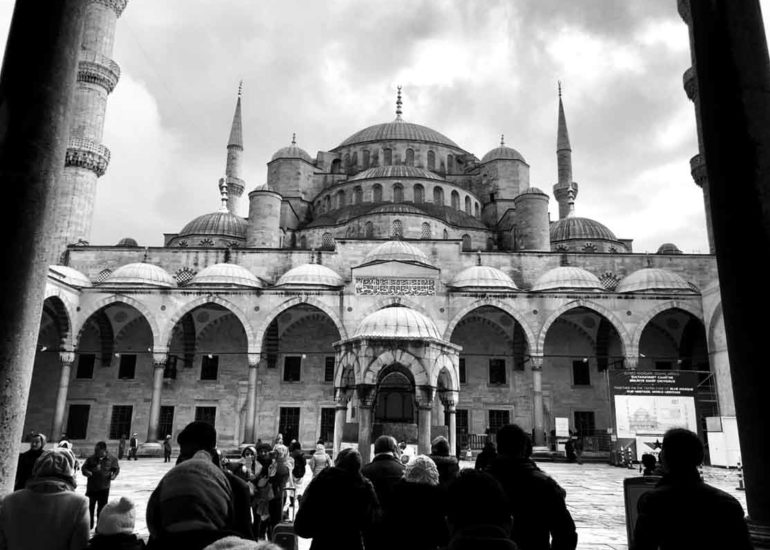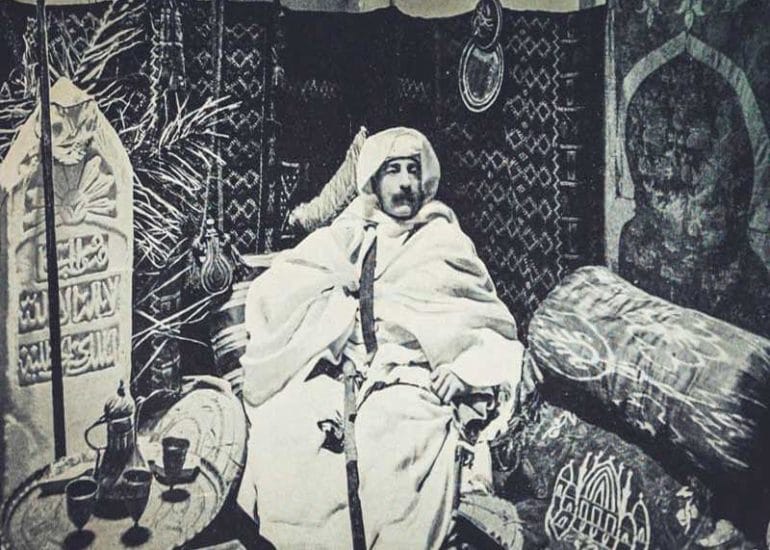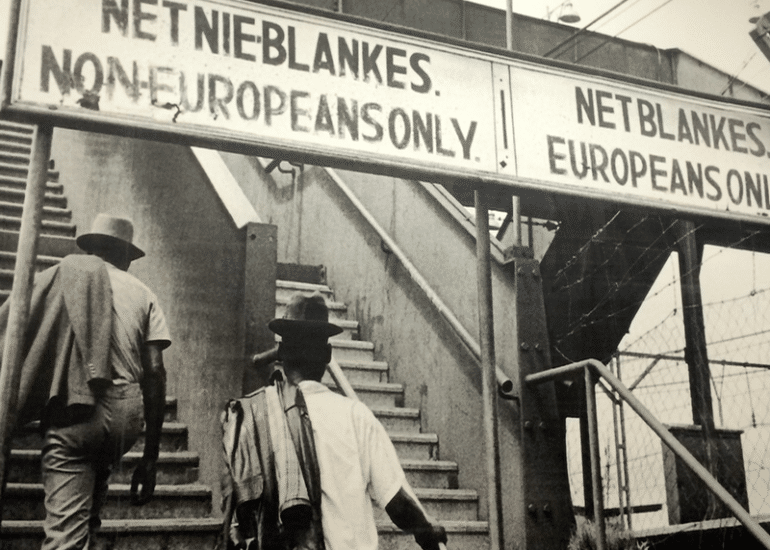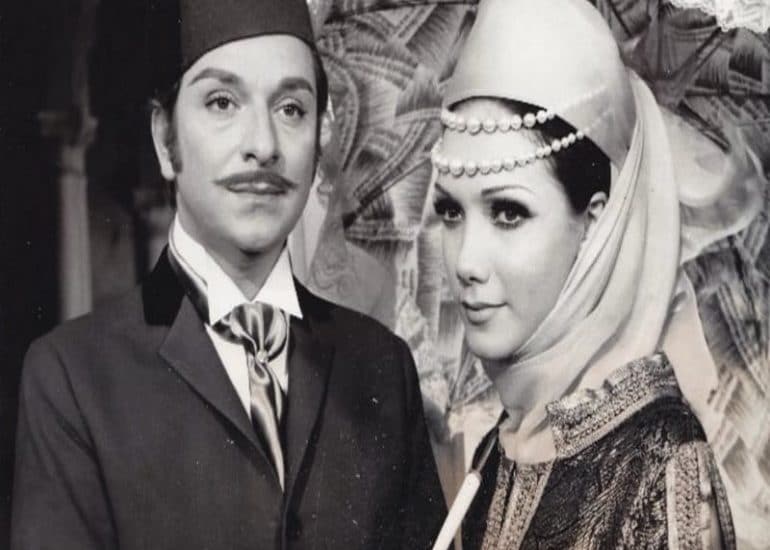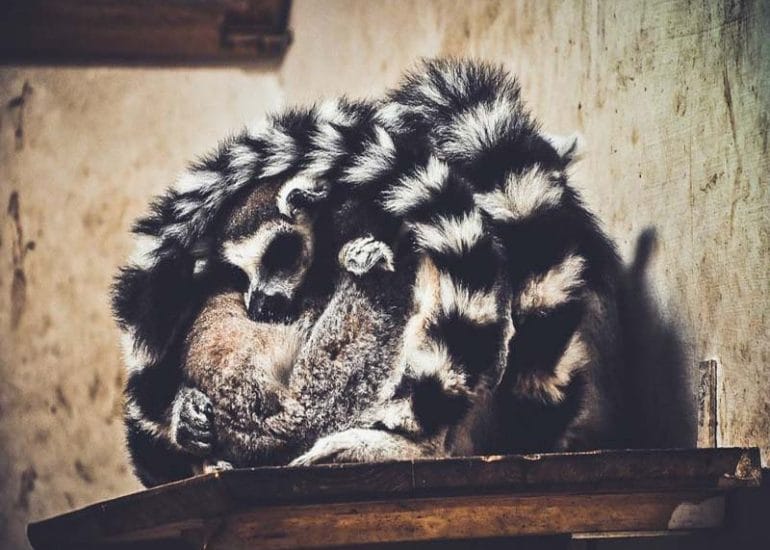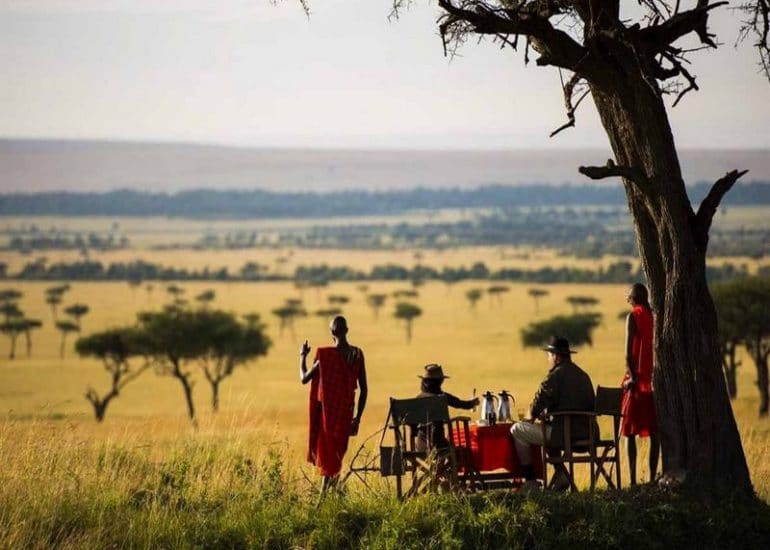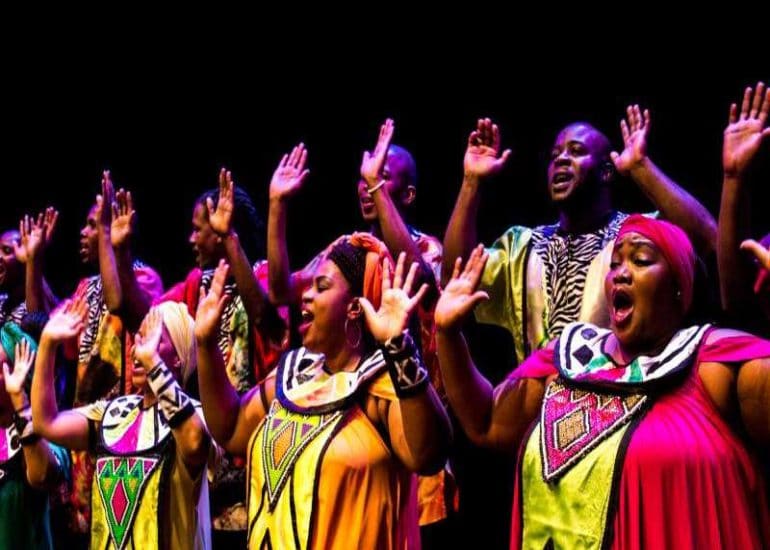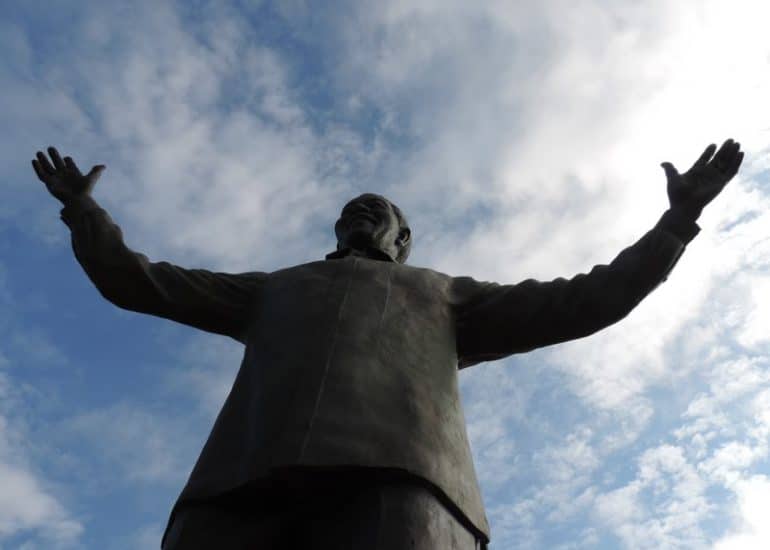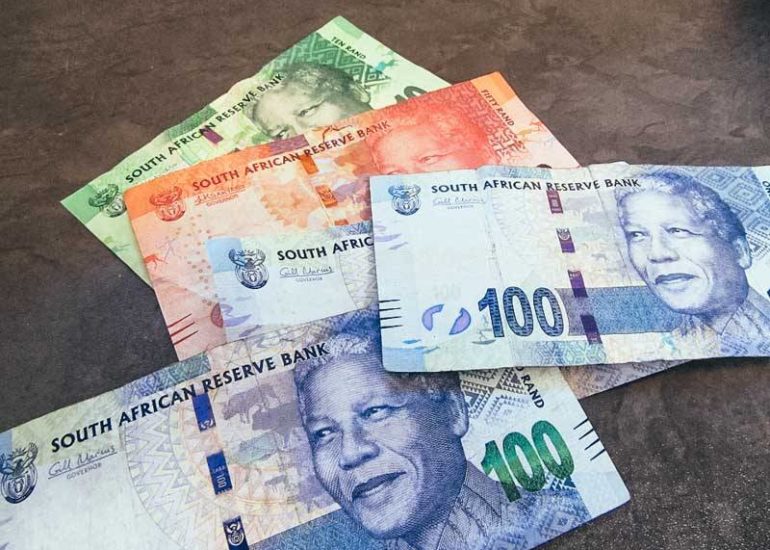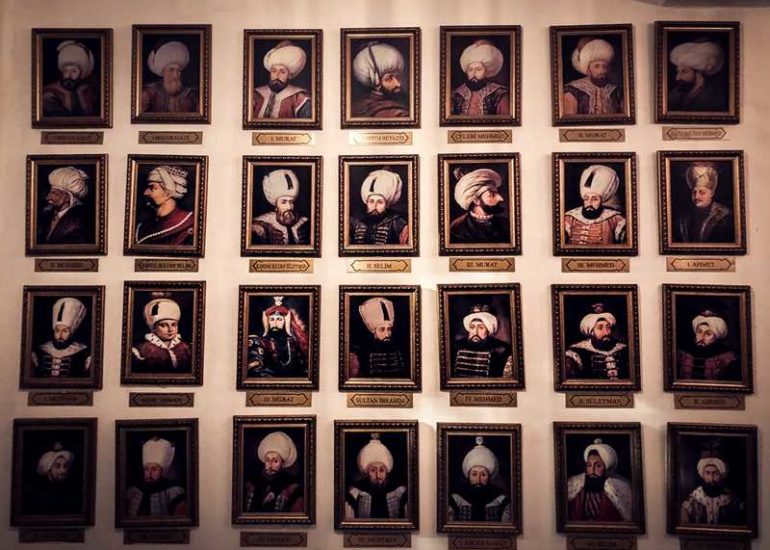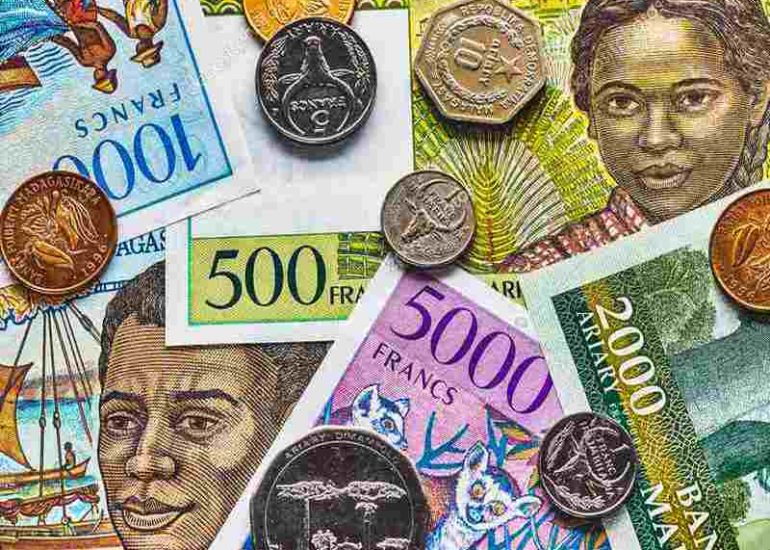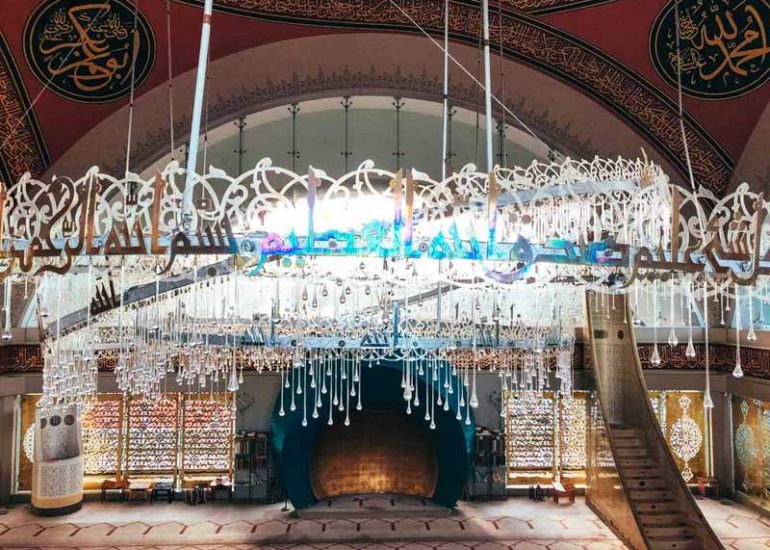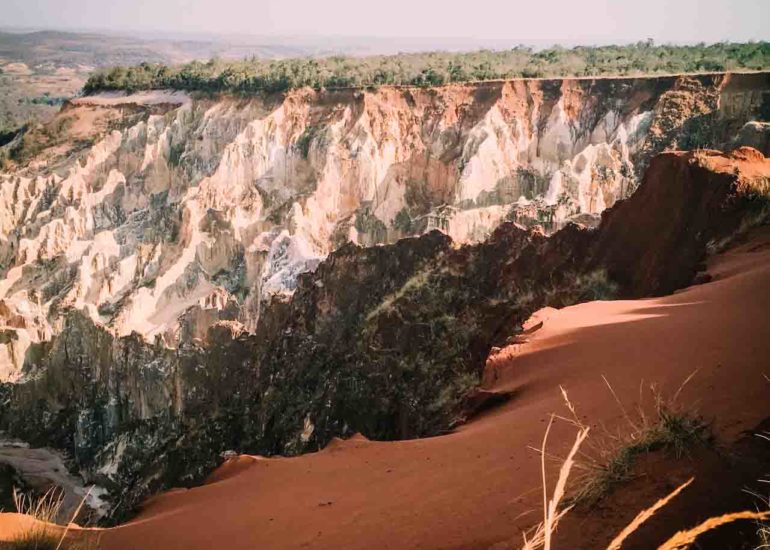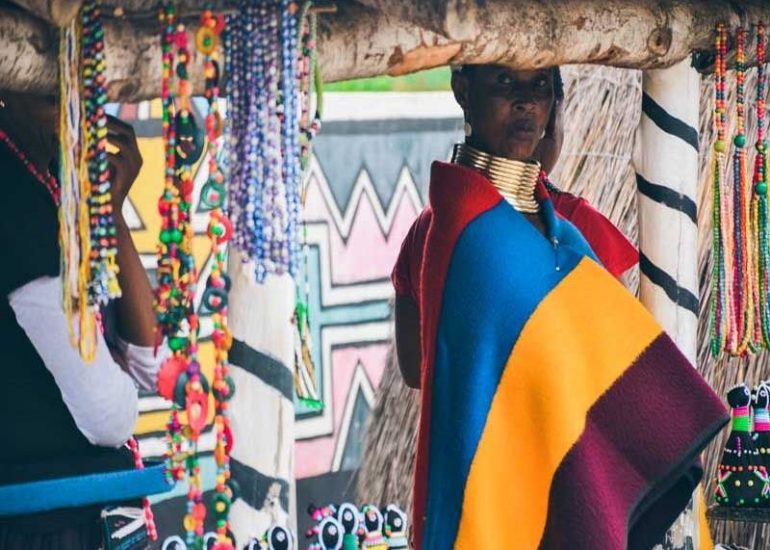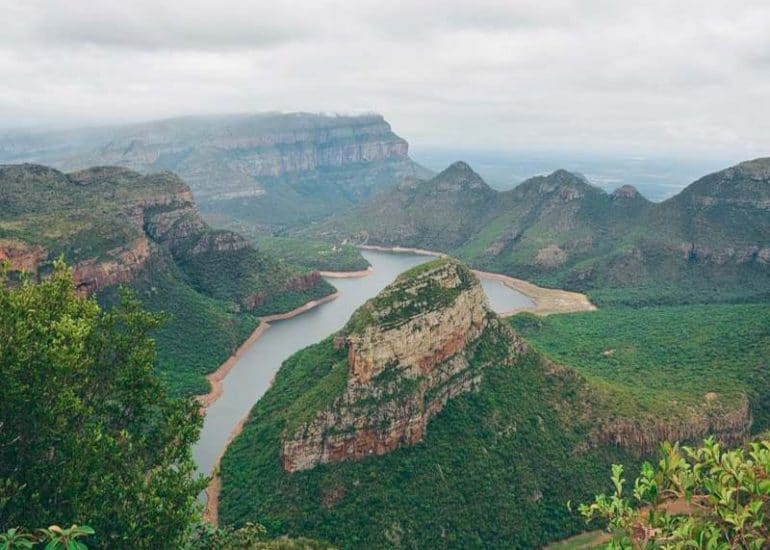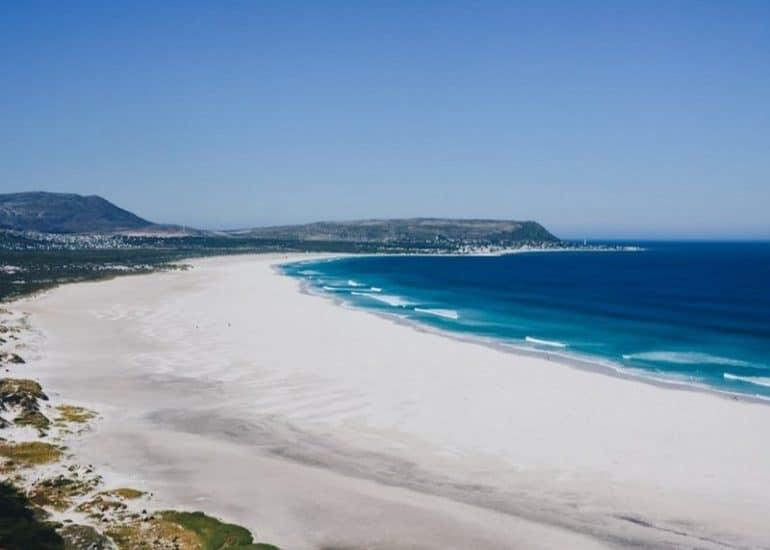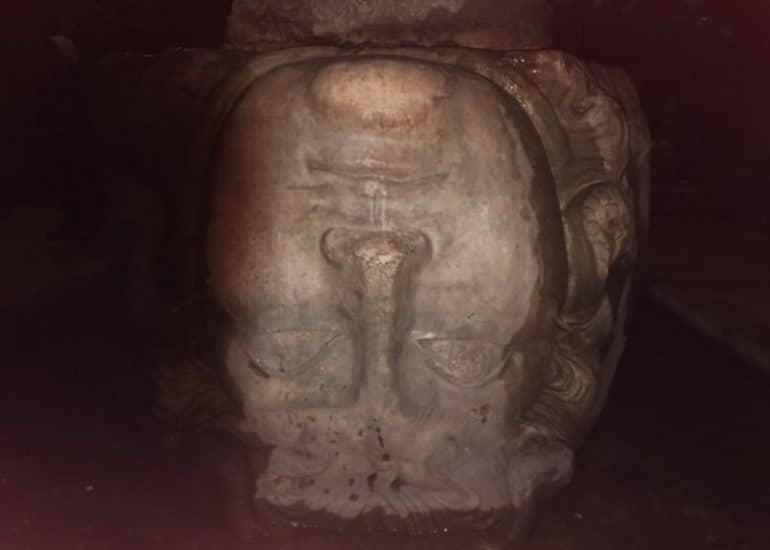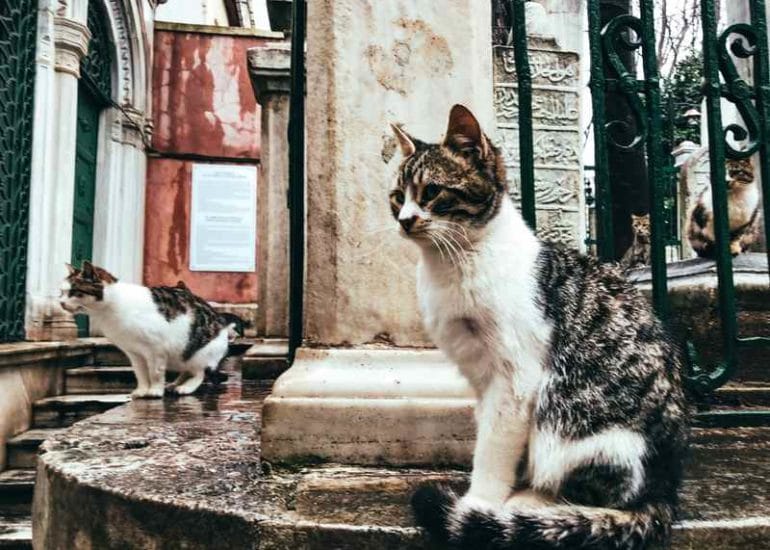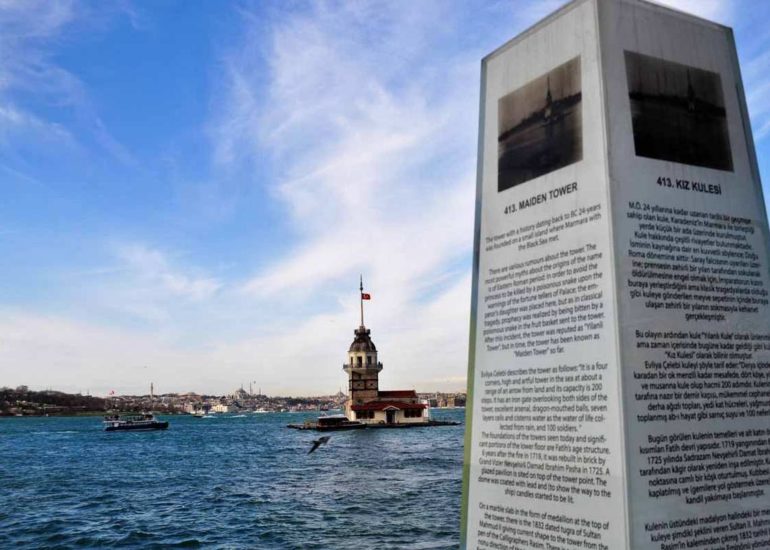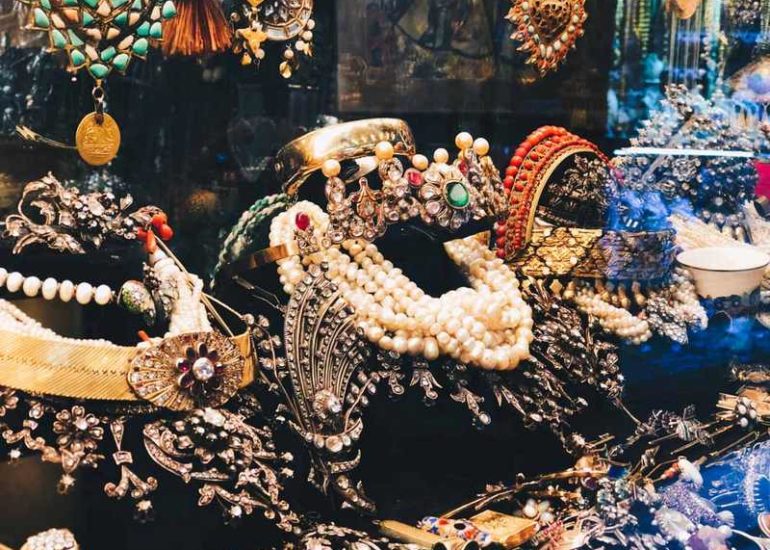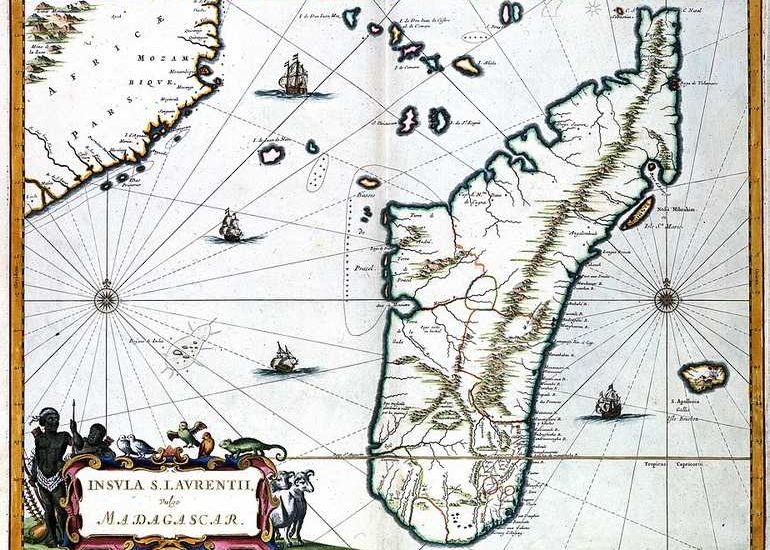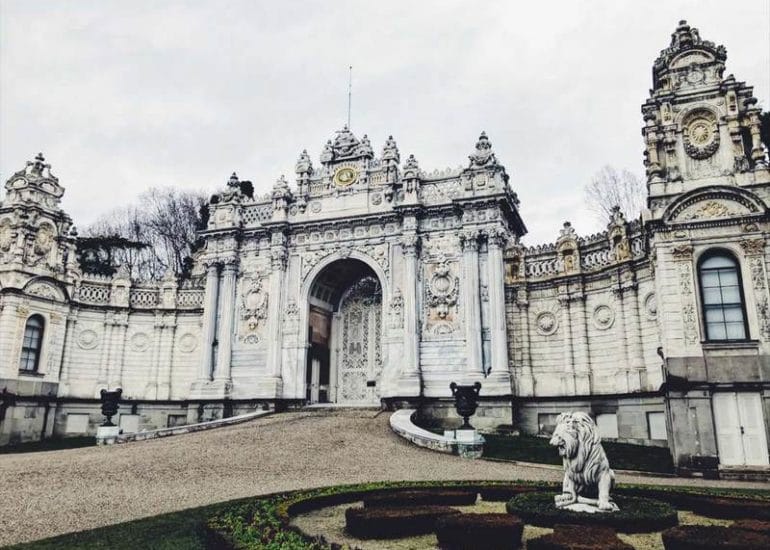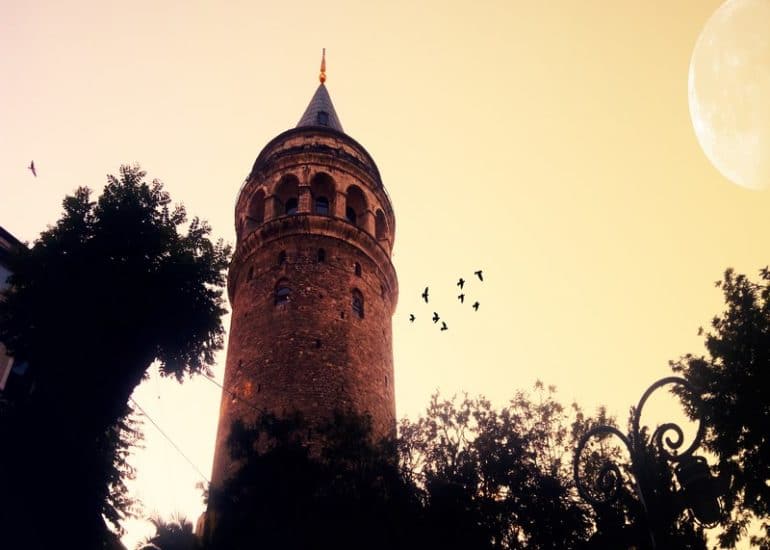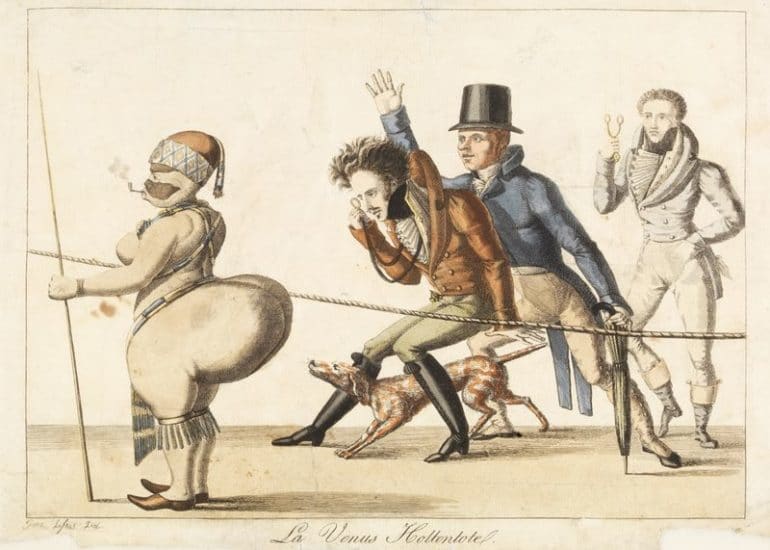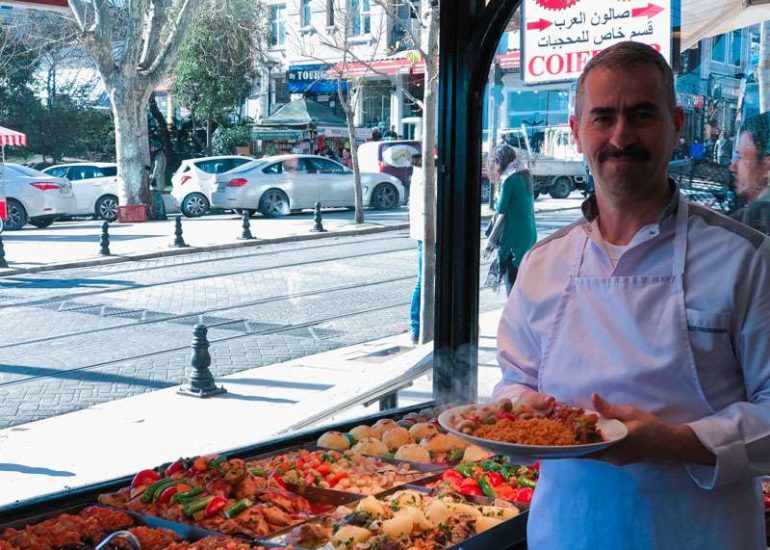A look back at the great periods that built the Rainbow Nation.
A review of a people’s struggle for its rights, and a man who has become a legend.
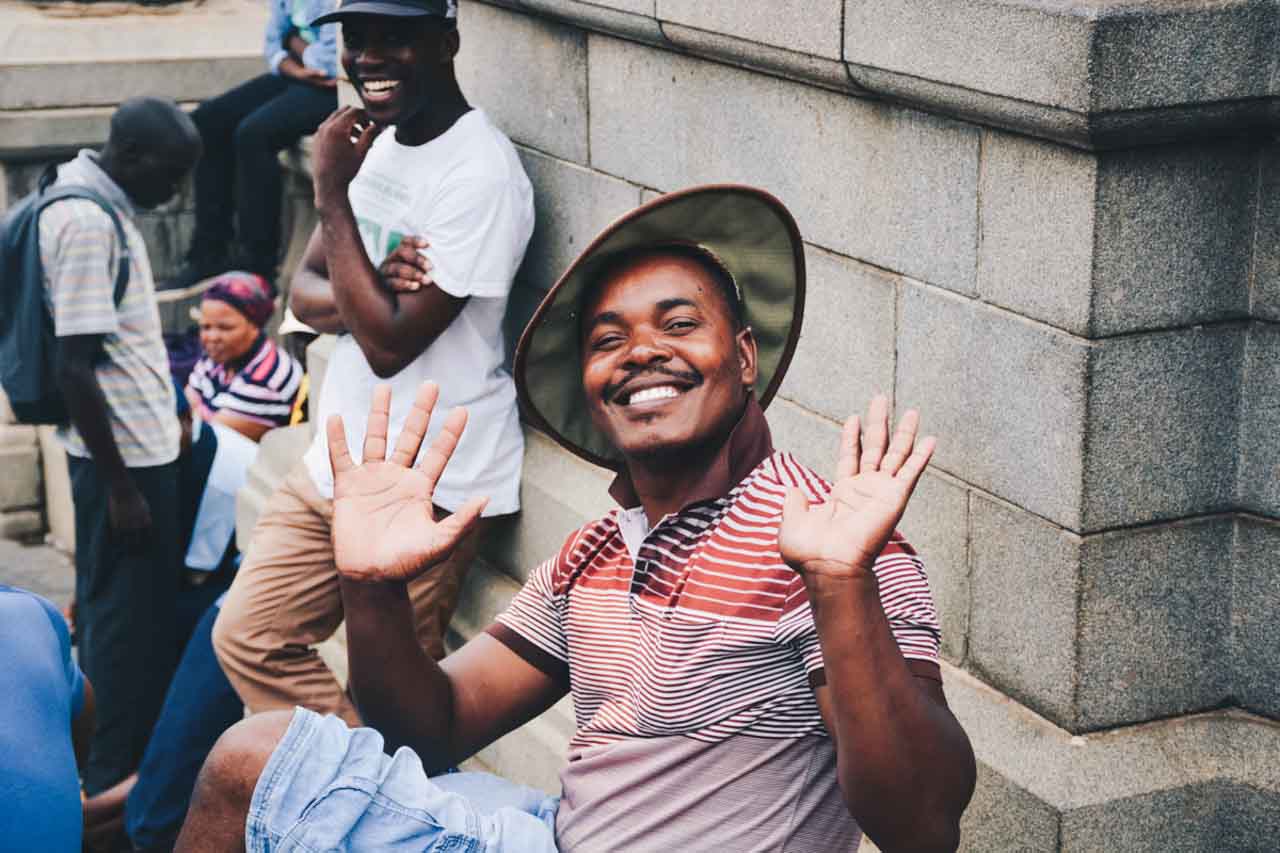
Two men pose for me in Pretoria, in front of the Court of Justice where Mandela was convicted.
A land without nation
South Africa, populated by different tribes, is a treasure trove of resources, conducive to colonization. It was to be done by the Dutch (Boers), the English, and more modestly by 1200 French Protestants (the Huguenots, who fled religious oppression following the revocation of the Edict of Nantes* in 1685).
To exploit this new land of promise, the whites must enslave the local people, monopolize their lands and livestock. Later, the Indian, Indonesian and Malagasy populations will increase the ranks of this cheap labour force. The slave trade is in full swing, forming the foundation of the future Rainbow Nation.
Local tribal leaders are no match for the arrival of these Europeans who settle in Cape Town, first, so that the Dutch East India Company can supply water and food to their commercial vessels in India and Indonesia. The san renamed bushmen (the tribe of the film The Gods must be crazy) by the colonists, are massacred (to such an extent that today they only remain in Botswana and Namibia).
*The Revocation of the Edict of Nantes in 1685 by the Sun-King Louis XIV prohibits any other religion (therefore Protestant) outside the Catholic religion.
The « Grand Trek »: the South African Far North East

1835 to 1840.
Wagons pulled by oxen trample the dust of the vast desert expanses, women, children, and slaves in the rear : the Afrikaners (or oxen) set out to conquer promised lands, followed by their livestock. They fled from the English in Cape Town, who had dominated them since 1806, and were outraged that they decided to abolish slavery and thus deprive them of a free labour force (40,000 people) without compensation.During this period, 30,000 Boers decided to migrate to the interior of the country in order to found a free and independent community governed by its own laws. They left to populate the lands of the African tribes, fighting the Ndébélés and the Zulus.
But Afrikaner history claims that these lands were uninhabited. And that's on this basis that the ideology of Apartheid will be built : Europeans and blacks would have arrived at the same time on the territory.Of course, this isn't true: the san people had been present in the Cape region for 15,000 years, the khoi koi (or Hottentots) 2000 years, and the Bantus since the 2nd century. The myth of the virgin land doesn't hold.
As for the interior of the lands where the oxen are headed, the zulus kings had already taken charge themselves of emptying part of the territory by waging war between tribes. There was only one type of enemy left to face : the zulus kings, who lost for lack of adequate weapons. The myth of the white man against Black Peril was born.
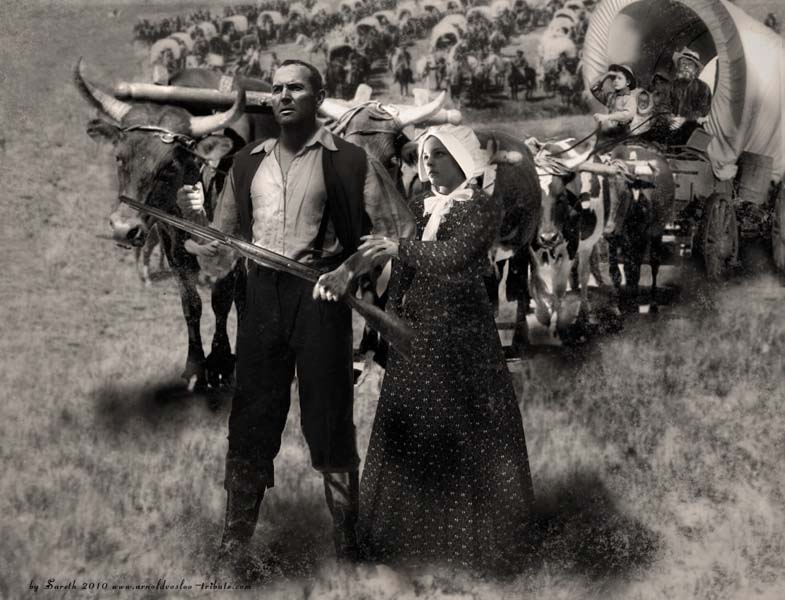
Some ten years later, the British eventually recognized the Boer republics (the Transvaal and the Free State of Orange).
Zulus Kings versus British Empire
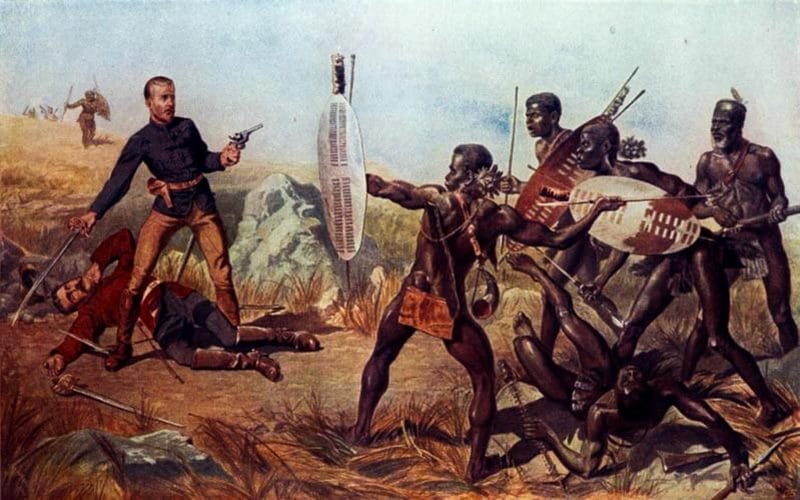
Shaka is the first South African king to have federated so many tribes around him. Strategist and visionary warrior, he created a real army of craft and in 4 years succeeded in conquering a territory even greater than France.
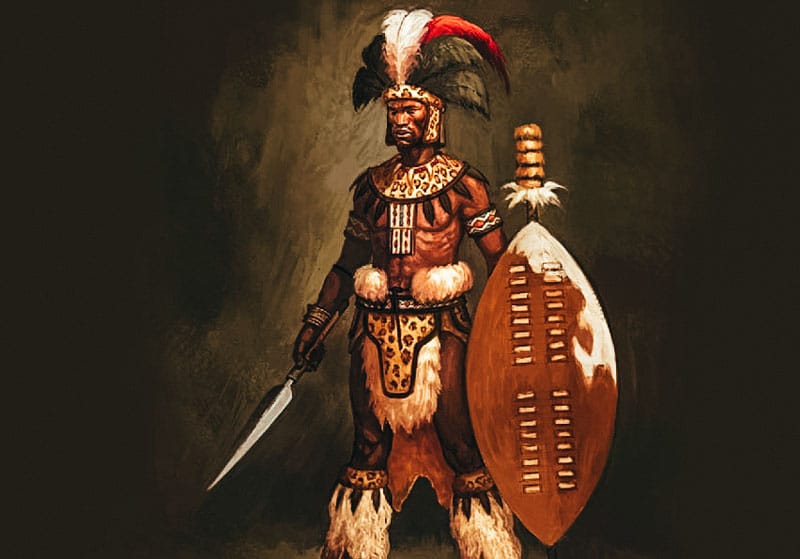
Tyrant, bloody, cruel (he had more than 7,000 men and women executed at the death of his mother, killed the old men of the defeated peoples), he nevertheless became a legendary pride for the Zulu people oppressed by the whites. A model of strength and rebellion.
Only the Zulu warriors « Impi ebumbu » managed to defeat the English, at the battle of Isandhlwana on January 22, 1879, thanks in particular to the tactics of the « head of the buffalo» (attacking simultaneously from the sides and the center to encircle the opponent) of former king Shaka.
The song Impi by Johnny Clegg, relates this battle, very important for the zulu people.
Hopeless battalion destined to die
Broken by the Benders of Kings
Vainglorious General and Victorian
Would cost him and eight hundred men their lives
The (old) film Zulu dawn recounts the English battle against the Zulu warriors.
Humiliated by this defeat, the British rallied to victory and captured King Cetshwayo kaMpand. They dismember the kingdom founded by Shaka by dividing it into thirteen territories.
British against Boers, on a land of gold and diamond
For 30 years, everything went pretty well between Boers and English. The latter maintain the coastal zone in order to expand their trade, and Afrikaner farmers cultivate the land. Until something awakened the British appetite: diamonds were discovered in Kimberley (1867), and gold (1886) in the Transvaal, in Dutch zones. War is inevitable. It will last 3 years. Two characters will play it : Cécile Rhodes and Paul Kruger, the same one who gave his name to the famous park. He will have to go into exile when the English win the conflict.
To sum up, both sides fought a war to share a country that did not even belong to them, and then, when the conflict was over, came to an agreement on a common enemy: blacks, 7 times as many as themselves…
1910.
The South African Union was born. Boers demand racial segregation from the British. The beginnings of Apartheid. Birth of the townships and the Job reservation act.
Apartheid*, the only example in the world of systematic codification of racial discrimination
« South Africa is the country of the white man, and he must remain the master. In the reserves, we are ready to let the natives be the masters, we aren't the masters. But in the European zones, we, the whites of South Africa, are and will remain the masters. »
Hendrik Verwoerd

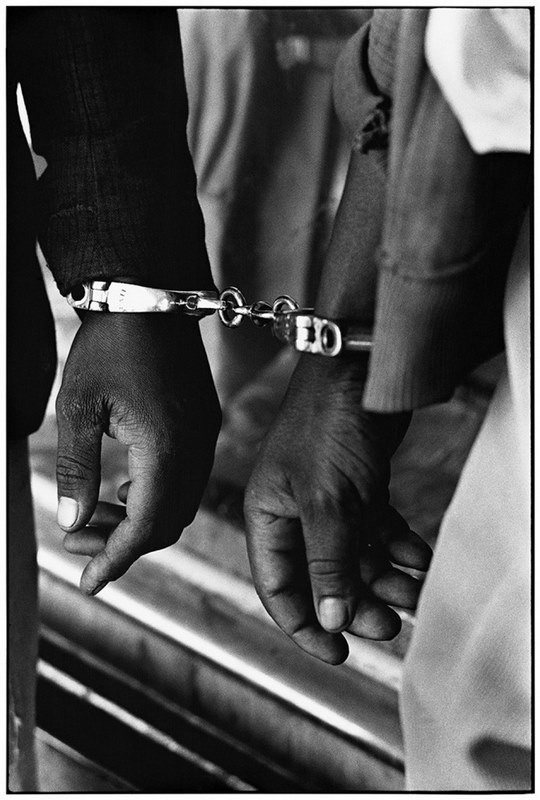
Apartheid is an Afrikaans word partially derived from French, meaning “separation, except”.
It's the name of the discrimination policy put in place to preserve the “ purity of the white race ” by codifying four races, corresponding to the South African population : white, Métis, Indian and black.
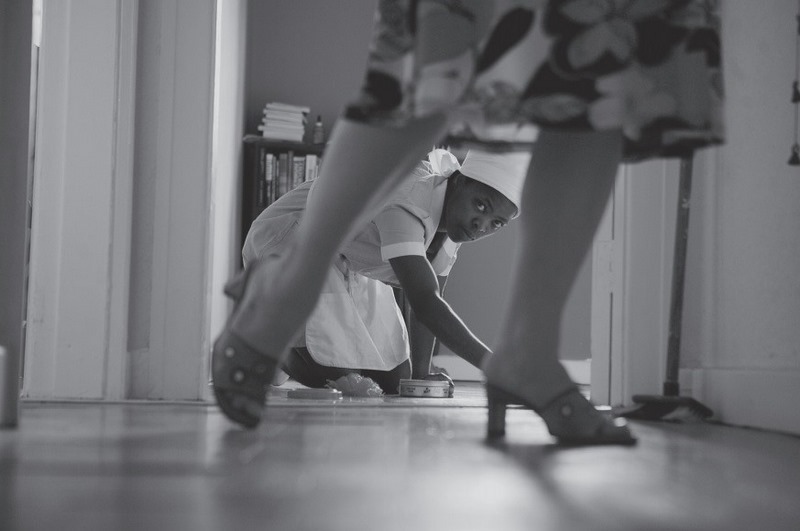
© Zanele Muholi Massa and Mina(h) series 2008 and ongoing
A “ separate development ” that deprives the non-whites of rights, prohibits them from positions of responsibility, mixed marriages, public places, in order to protect the whites from any possible rebellion of the country’s majority population. A task, a shame, an aberration.
Park, belittle, the black people in order to preserve the wealth, property, power and control of the country.
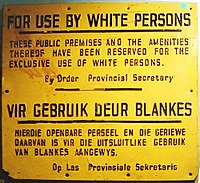
But segregation didn't begin with the Apartheid, it appeared in the middle of the 16th century. By the 19th century, Blacks had already had to lodge away from white cities in « Native locations » (dormitory cities) and certain trades were reserved for Whites via the Job reservation act. It then satisfied economic needs.
What changes in 1948 is that the « social project » of Hendrik Verwoerd, the Minister of Foreign Affairs and future Prime Minister, is instituted.
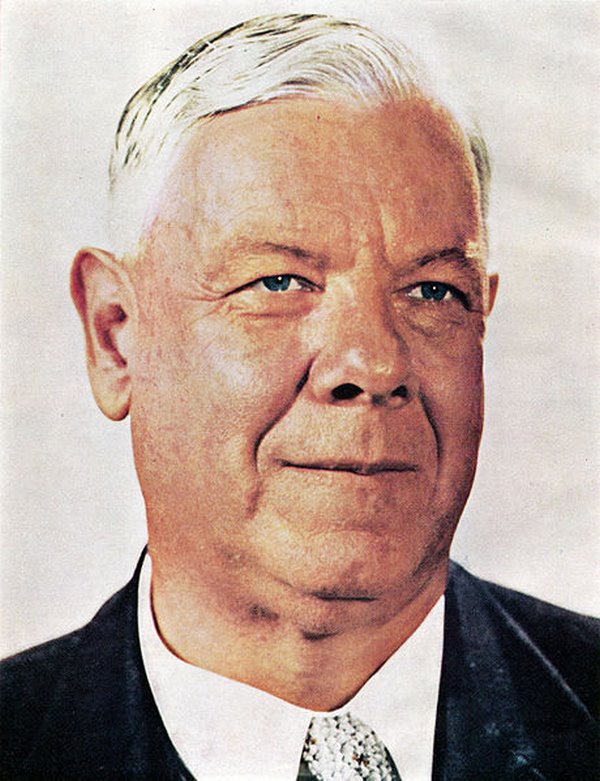
Hendrik Verwoerd, for whom Blacks are only “ water carriers and wood cutters ”, will end up stabbed to death in the middle of parliament.
The Population Registration Act classifies the population into three categories : European, Coloured, Indigenous (or Bantu), and later, Asian (Indian).
A compulsory “ pass ” for all Blacks, stating their address and employer and prohibiting them from being elsewhere in the country,

…and discounted education is put in place – this will set the fire on…
While the Christian National Education put in place a teaching based on white supremacy, the Bantu National Act, intended for the non-white, prepared them to work in lower professions and especially not to become too educated, to avoid any rebellion.
Verwoerd declared :
What would be the point of teaching mathematics to a young Bantu, knowing that he will not intend to put it into practice ? That would be absolutely absurd. The education system needs to be adapted to the opportunities that will later be available to the students who have integrated it, to adapt it to the environment in which they live.
The Coloured Persons Education Act and the Indian Education Act will soon follow, keeping Métis and Indian people at the same level of education as pale faces.
In addition to violence and institutionalized injustice, this has resulted in a two-tier society, the black poor and the white rich. It was of this society of misery that Mandela inherited when he was liberated, and that we can still see in cities such as Soweto, the township of Johannesburg.
Whites decide where non-whites should work, stay, who they can marry, what to eat, what education to follow, and their health system.
The white population is raised in the certainty that if Blacks are not administered and relegated to their “ bantustans ” they will kill.
The ANC and its " troublemaker " : Rolihlahla
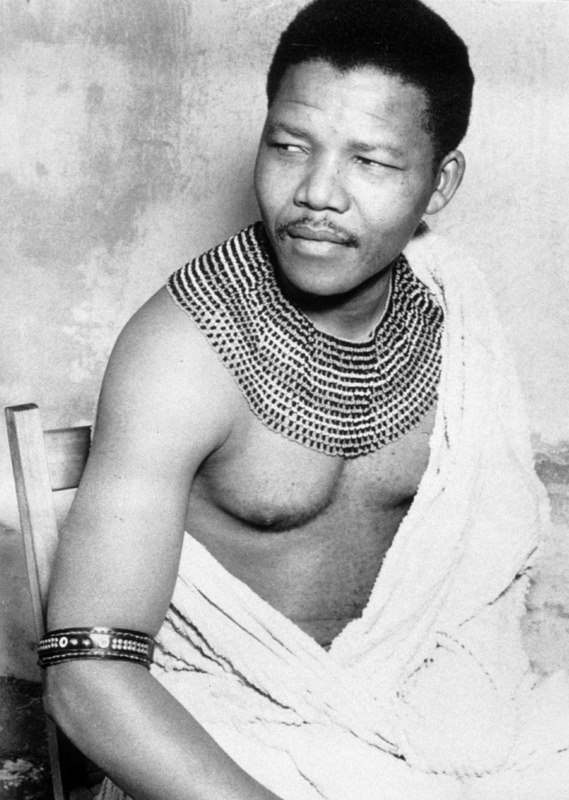
1913.
The African National Congress, the future party of Mandela, is created. In the aftermath of World War II, the party claimed “ One man one vote ”: universal suffrage. Three-quarters of the country doesn’t have the right to vote.
Forty-seven years later, the young lawyer (he was able to start his studies of letters by correspondence and then of lawyer by integrating the only university open to Blacks), manages its youth division. He must master the western laws to acquire the same weapons as his oppressors, and reject their contradiction to their face.
Inspired by the civil disobedience advocated and experienced in the country by another lawyer, Gandhi, Mandela persuaded other activists to follow this path. But events will decide otherwise.
1960.
69 blacks are killed (shot in the back…) by the police in Sharpeville during a demonstration. The state of emergency is declared and the ANC is banned. It's too much, Mandela’s ANC has no choice but to fall into violence : call for a general strike, sabotage (symbolic, not murderous). He goes to war with his government. And he hides. But the geopolitical context of the time plays against him. We are in the middle of a cold war, Europe needs the minerals and metals of South Africa.
Mandela travelled to Africa (Tanzania, Ghana, Ethiopia, Tunisia, Egypt, Algeria, Morocco, and even London) to plead his case, train his fighters and raise funds.
1962.
In exchange for one of his undercover operatives, the CIA helps the government find Mandela, returned to the country disguised as a driver. We’re in the middle of a spy novel.
After 17 months of stalking, he will be sentenced to life in prison during the Rivonia trial in Pretoria, with seven comrades from the military branch of the party (Umkontho We Sizwe : the spearhead of the nation). During his 4 o'clock speech (not as long as Castro's ones, who admired him enormously lol), he will then make this statement that became famous :
During my lifetime I have dedicated my life to this struggle of the African people. I have fought against white domination, and I have fought against black domination. I have cherished the ideal of a democratic and free society in which all people will live together in harmony and with equal opportunities. It is an ideal for which I hope to live for and to see realized. But, My Lord, if it needs to be, it is an ideal for which I am prepared to die.
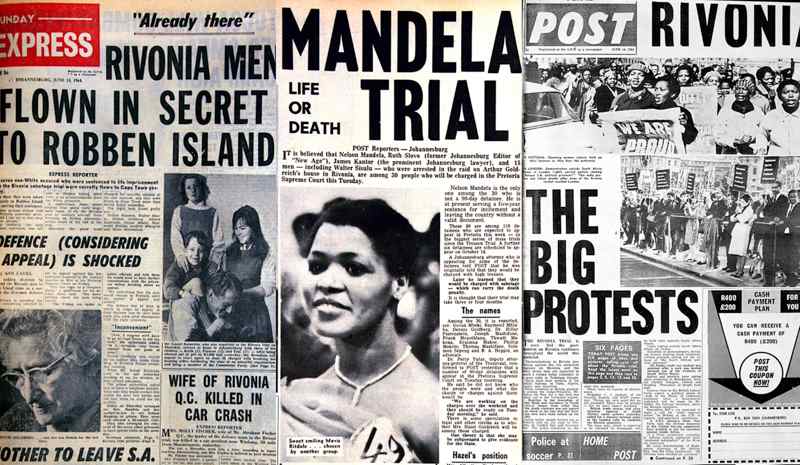
Despite this provocation, he will soon escape the death sentence.
While the other accused are gradually released, he will remain in prison for 27 years. The government wants to make him forget.
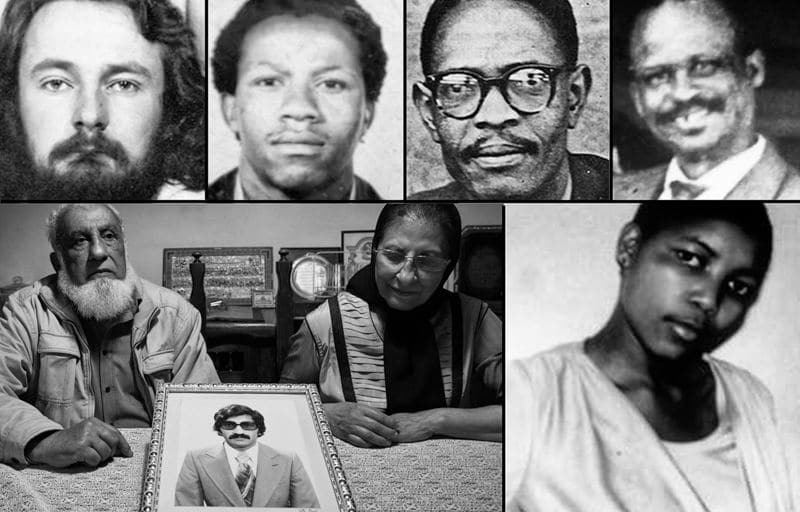
The other defendants in the Rivonia trial.
Thanks to the discovery of recordings of the trial (there are no images of it) and to the testimonies of the ex-prisoners, a film was born : "The state against Mandela and the others". It helps to highlight the struggle of his comrades and to understand the strength of their commitment. Sisulu, Mbeki, Motsoaledi, Mlangeni, and Goldberg, white, black and Indian South Africans who will also be sentenced to life in prison for their struggle against oppression and their dream of a rainbow nation. A particularly moving, vibrant film.
Robben island, " The Mandela University "
Tiny cell, no contact with his family, ridiculous rations, rock breakage in a quarry under the hood, but his will doesn't weaken, even when the guards urinate on him. If everything is done there to belittle, punish, weaken him, the result is quite the opposite. There his inner strength grows and he learns to know his enemies, even to transform them (one of his jailers will write a book about him). His relations with his guards made him realize the fear of whites being slaughtered if the black population came to power without the will to share it. He learns their history, their language, prepares dialogue, finalizes his studies.
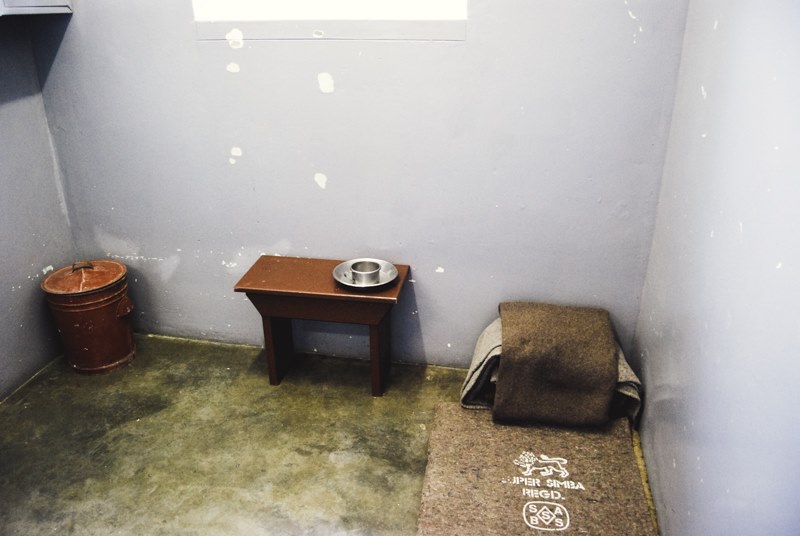
But in his prison island, his aura grows. And he learns, he understands. The ANC continues to live thanks to Oliver Tambo, who has led it even being in exile. Violence is increasing. While many countries on the continent are breaking free from the colonial yoke, South African blacks are rebelling. Riots ensued, a state of emergency was declared : the blacks were shot like rabbits in the townships. Mandela’s wife Winnie, from Soweto, continues the fight.
Winnie Mandela, the south african Che Guevara

Winnie is her husband’s female counterpart. As combative, tenacious and charismatic as her husband, she endures everything, never lets herself be bent. While her husband is serving his sentence cut off from the news, she is living through the dark years of apartheid and continuing the struggle. She's the only one who openly opposes the regime, and for that reason is monitored, arrested, banished, betrayed, exiled. She dug up ANC weapons in the ground, recruited, organized, mounted an army. She's accused of murder, adultery (in 27 years we could understand the difficulty to remain faithful !) to discredit her, so that the ANC takes its distance.

The Soweto uprising
The South African May 68 is a June 76, and much bloodier than the french's one.
The government imposes the Afrikan language on the students of the townships, but the black youth no longer wants the education the government reserves for them. Students demonstrate in the street, police officers shoot them : nearly 600 people will be killed, one of the first is Hector Pieterson, a 13-year-old boy, became the symbol of these riots, which are gradually gaining all the townships of the country.
Meanwhile, Nelson Mandela, who was then imprisoned on Robben Island, was placed in solitary confinement with no possibility of finding out what's happening in the country.
Every four years, the black youth will rebel : 1976, 1980, 1984.
Discover Soweto
The time for negotiation
At the end of 88, Mandela had to be hospitalized, he left his prison. The world finally saw images of him and caught fire : he became an icon. The same year, the “Mandela day”, a pharaonic concert, was organized in London to honor him. Times are changing, the Cold War is over, the world is outraged, white South Africans are tired of being ostracized from the world (economic and sports embargoes), and most importantly, the Government is changing. Winnie, head on, negotiates his release.
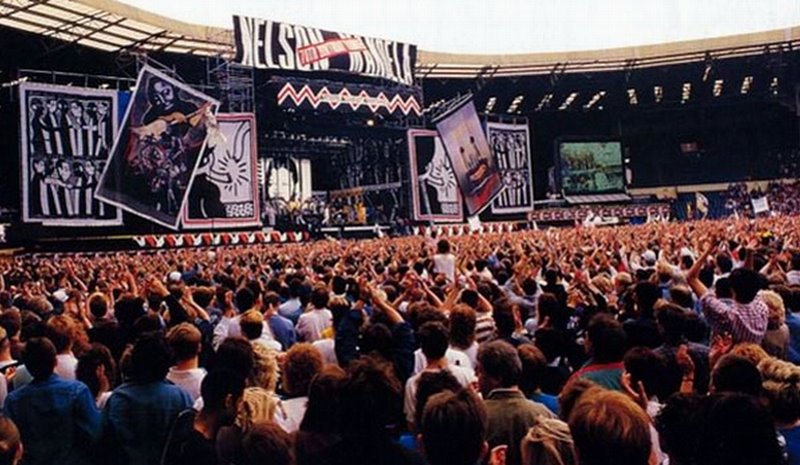
Madiba gets a point by stating that the Afrikaner is an African like any of his fellow Black inmates, and thinks that in their place and under other circumstances he could have had the same view on apartheid. Respect. The government understands that it can negotiate with this man.
The new Minister of Justice, Kobie Coetsee, says « There is no doubt that Mandela possesses all the qualities to be the number one black leader of South Africa. His stay in prison only reinforced, instead of diminishing, his psycho-political position, and he acquired in prison the charisma characteristic of the great leaders of contemporary liberation movements. »
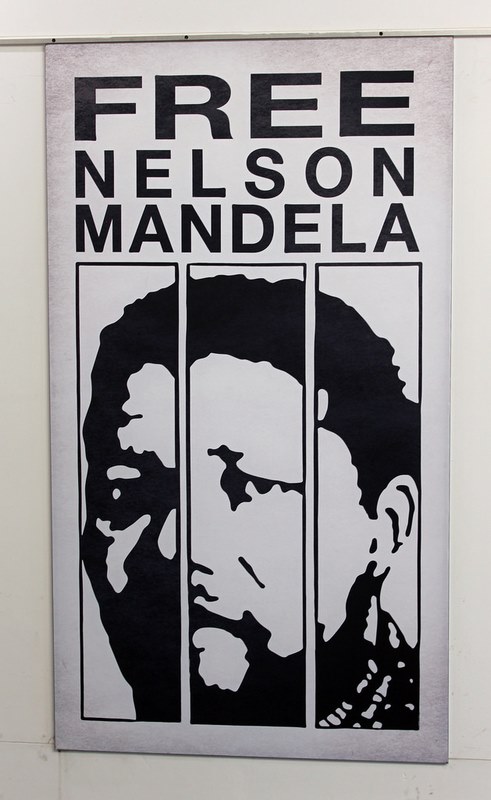
President Frederik de Klerk released him in February 1990, after 27 years in prison, from a sordid prison to supervised residences. He is 71 years old. He’s walking hand in hand with Winnie.
« Talking to your enemies requires not listening to your blood, but obeying your brain. »
Together they negotiate, prepare for the transition, avoid a civil war in the country, and for this they jointly receive the Nobel Peace Prize. Madiba took his place in 1994, until 1999.
But Winnie isn't ready for compromise. She “took the bullet” so doesn't believe in the government’s promises and the ANC’s positions. Too radical, she undermines negotiations and threatens the ambitions of some. Everything is done to oppose the couple, and it works. She becomes a controversial figure, Mandela must get rid of her, they get divorced.
Truth, Reconciliation, reparation
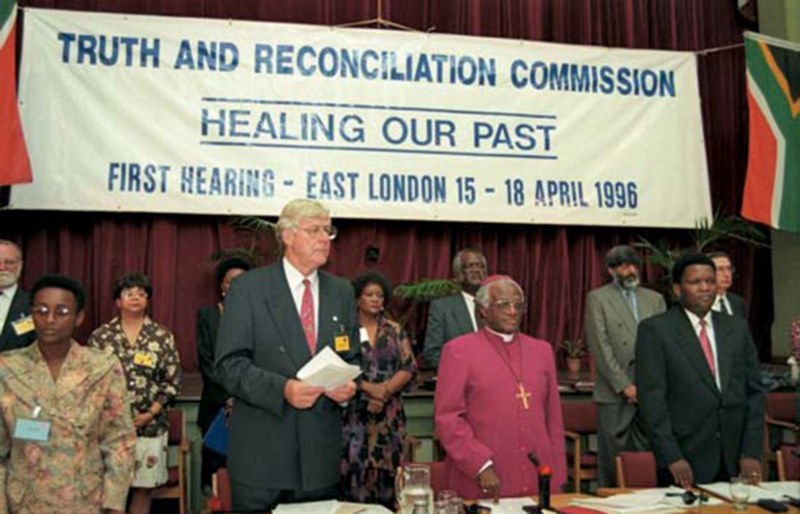
Apartheid came to an end thanks to the sanctions of the United Nations, to the international pressure, to the change of mentality of some Afrikaners, and because the government had no choice : it was a dead end. Four million whites could no longer handle the 35 million blacks in revolt. But without Nelson Mandela and President De Klerk, the country would have fallen into a bloody popular anger. Instead, Mandela is elected and a “ Truth and Reconciliation Commission ” chaired by Desmond Tutu criss-crosses the country to record human rights violations during Apartheid, from 1930 to 1993 : a kind of national therapy so that resentments can be expressed, that injustices can be revealed and that the guilty can make amends.
Without forgiveness there is no future. Desmond Tutu
The public follows the hearings via the TRC Special Report, which is televised on a weekly basis.
To this end, Winnie receives the worst affront : she's the only member of the ANC to be “ tried ”, she must answer for the murder of a black spy, confused by more than doubtful and contradictory witnesses. Desmond Tutu is convinced of her guilt. She makes ambiguous, furious excuses.
December 16 became a holiday : it's the Reconciliation day in all the country.

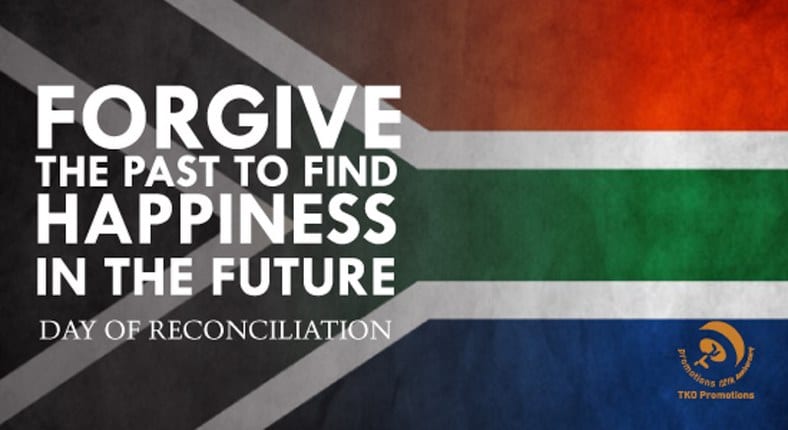
Post apartheid. What's the weather over the rainbow ?
1994, Mandela has presided over the country for only a year, he must reconcile communities in a country where vindictiveness and resentment still govern hearts.
Against the advice of his advisors, he joined forces with the captain of the Sprinboks, the national rugby team, to send a strong message and show the possible union between the communities. The president wears the jersey of the team boycotted internationally for a long time because of apartheid.
The mediocre team of the Sprinboks won the Rugby World Cup in 1995, white and black hearts vibrate in unison with the same national pride. Sport has been a unifying force. Mandela presents Captain Francois Pienaar, with William Ernest Henley’s poem Invictus, which states :
« I'm the master of my fate, I'm the captain of my soul »
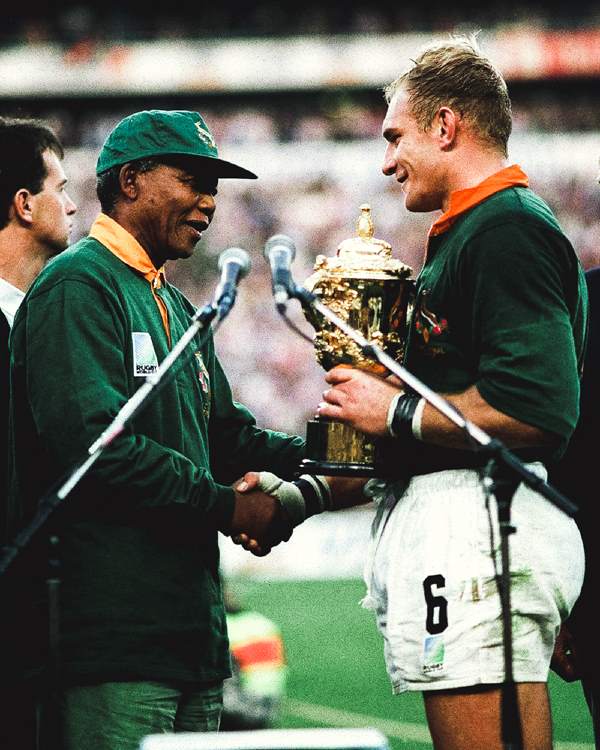
He did it.
Mandela has succeeded in transforming a dictatorship into a multiracial democracy. A future we wish to many countries around the world.
Diversity trainers are engaged in companies, in order to teach employees to work together. National education must make up for the education deficit of the non-whites.
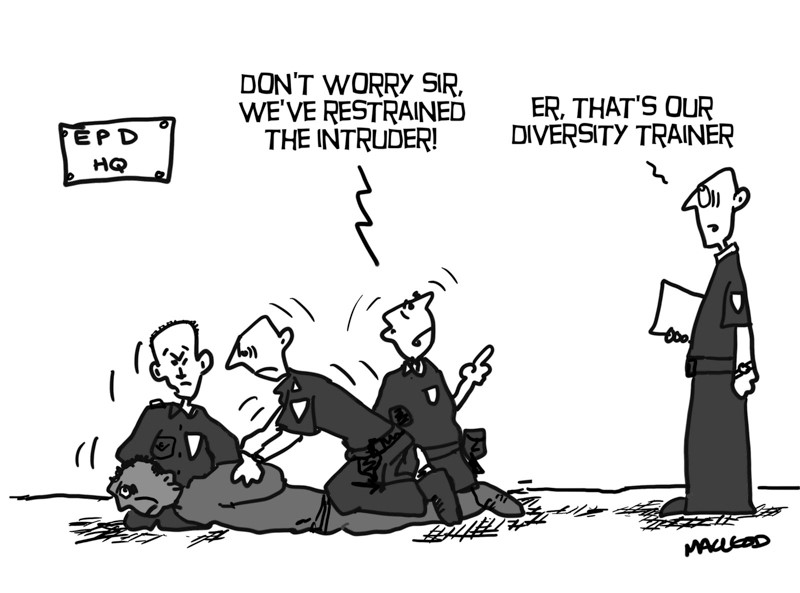
The country today : A rainbow of green, red, blue and hope
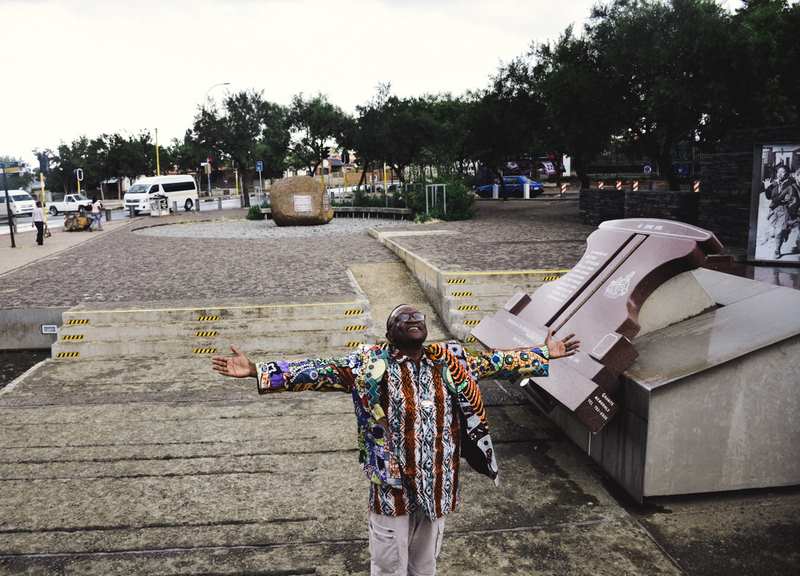
Our guide, who fell in love with the country, seems to tell us, from the place of Pieterson’s assassination, "Now let us open our arms to the future".
In 2017, more than 20 million South Africans still live in the townships bordering the country’s major cities, more than one in three. The mistakes of yesterday continue to pay off today and the Rainbow Nation is still prey to strong violence (crime rate is higher than the majority of other countries in the world, private surveillance companies and high electric fences abound), high unemployment (26.7% at the end of 2017) and ghettoized poverty. But this is no longer reserved for the black population. The divide is no longer between whites and blacks, but between rich and poor. A black middle class has emerged, but the road is still long; you don’t get out of so many years of oppression and misery in one day.
However, despite these disparities, the law is now the same for everyone, and we are increasingly feeling the unity of a country, this old dream of Mandela’s Rainbow Nation. Now fully open to the world, gradually waiting for the healing to begin, South Africa is opening its wonders to tourists and South Africans are more than happy that the world is interested in their country. One only has to see the greetings and smiles at the passages of the tourist buses.
My country is rich in the minerals and gems that lie beneath its soil, but I have always known that its greatest wealth is its people, finer and truer than all the purest diamonds.
Mandela – 1995
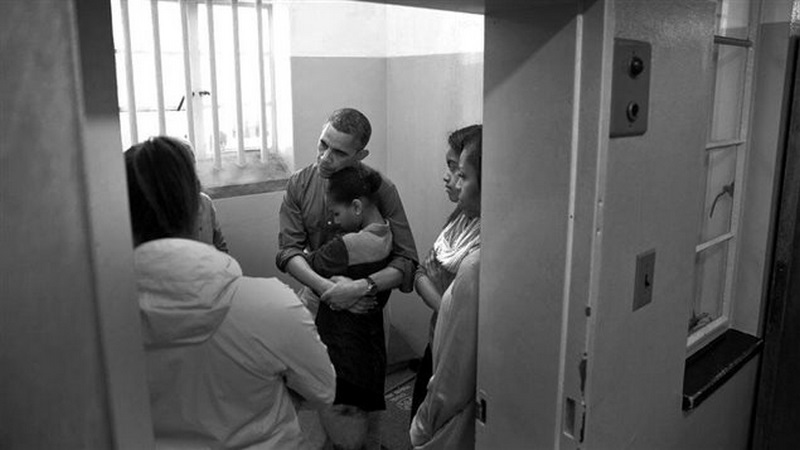
The Obama family visiting Mandela’s former cell.

Out of the night that covers me,
Black as the pit from pole to pole,
I thank whatever gods may be
For my unconquerable soul.
In the fell clutch of circumstance
I have not winced nor cried aloud.
Under the bludgeonings of chance
My head is bloody, but unbowed.
Beyond this place of wrath and tears
Looms but the Horror of the shade,
And yet the menace of the years
Finds and shall find me unafraid.
It matters not how strait the gate,
How charged with punishments the scroll,
I am the master of my fate :
I am the captain of my soul.
Invictus – William Ernest Henle
Did you know ?
The day Gandhi disobeys
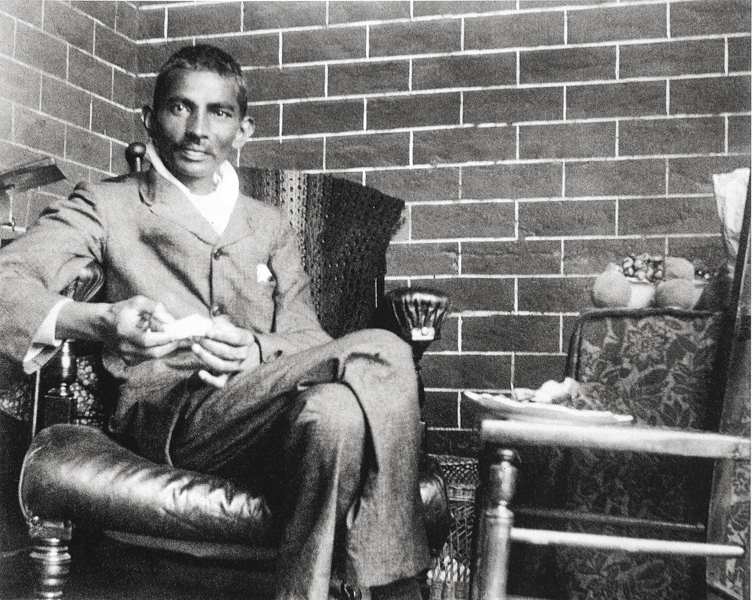
Gandhi lived in South Africa for 21 years. The young graduate of the bar was subjected, like all his other Indian relatives, to the apartheid regime. A few days after his arrival, he is disembarked from a train at the Kwazulu Natal, for rebelling : he wished to travel in the compartment reserved for whites... He has to spend the night at the station, sleep on a bench.
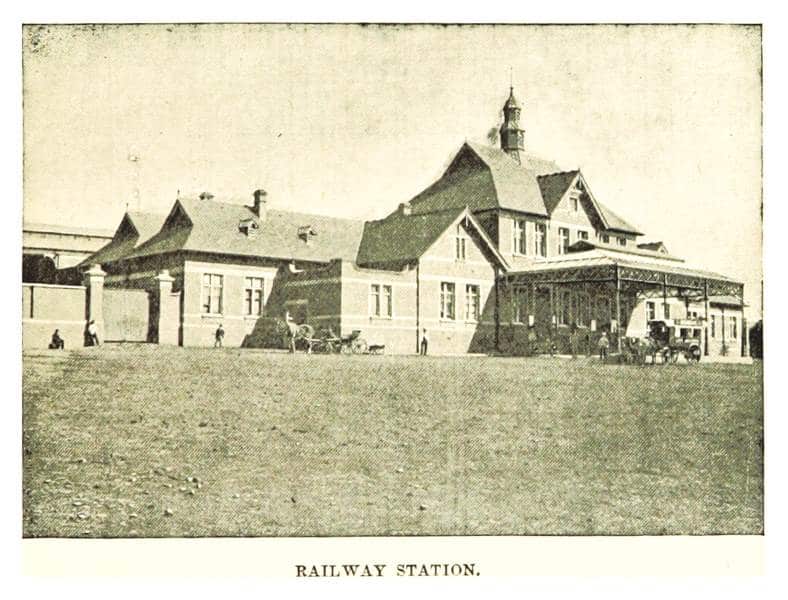
Pietermaritzburg railway station, where Gandhi was disembarked.
It's in this context of racial discrimination that the shy young boy will forge his thought and determination, and later become the father and leader of non-violent civil disobedience, and follow the destiny that we know him. The condition of the non-whites in South Africa made him reflect on that of his own people in India.
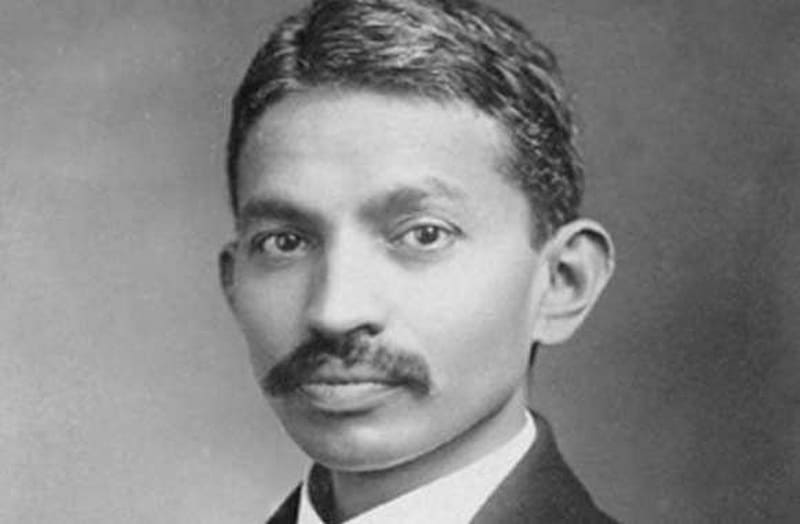
« South Africa, the country that inspired the Mahatma, and that the Mahatma inspired, chose the path of peace in spite of all the birds of bad omen. We chose this path, the road of negotiation and compromise. We hope we have honoured his memory. And may others, in remembrance of this great tradition, imitate us.”
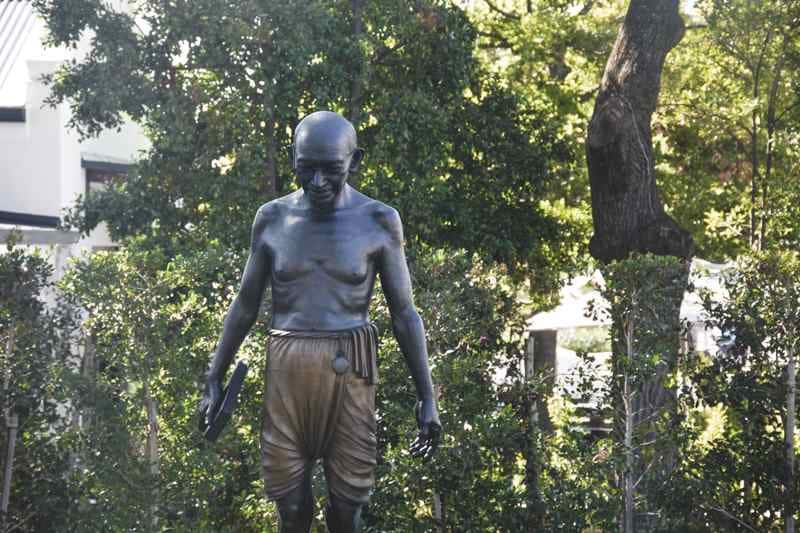
In Franschhoek, the statue of Gandhi faces the statue of Mandela in the garden of the boutique hotel Leeu House.
Satyagraha (“ power of truth ” in Sanskrit) house, located near Johannesburg, traces the life of Gandhi in South Africa. He lived there only for a year, but he developed his concept of passive resistance in the house.
